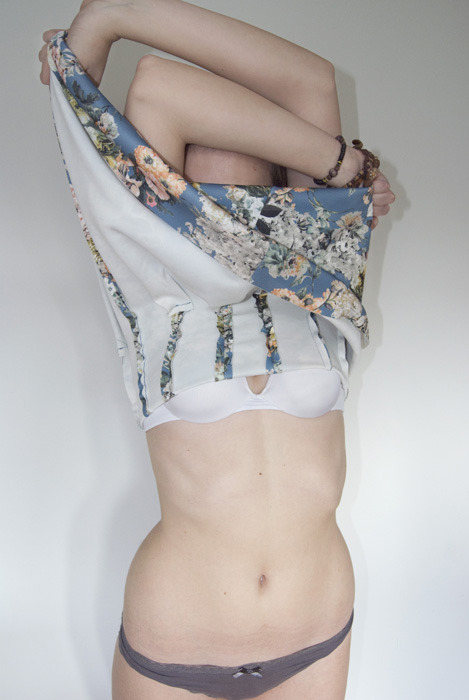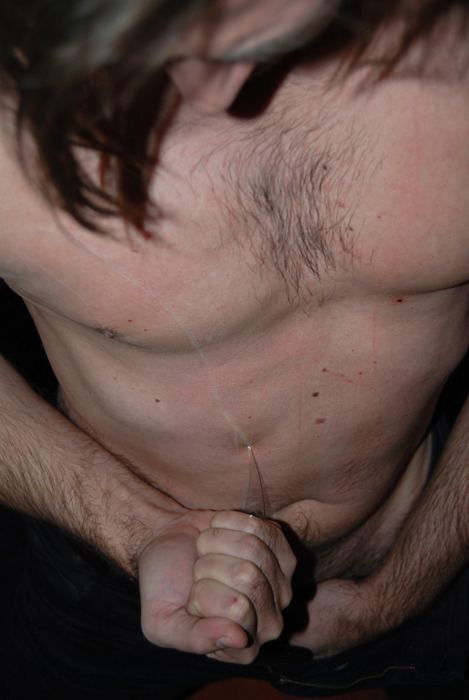Tell us about your approach to photography. How it all started? What are your memories of your first shots?
Nathalie Nijs (NN): My first picture was of my parents on a holiday. I remember the moment as, and because it felt like, being significant. I think my initial interest in photography originates there, in photographs as personal souvenirs or, when not so personal, as a document. I also remember, when I was a child, in search for a subject, taking a picture of a flower in the garden. And when I was sixteen I did a photo shoot with my boyfriend. I was always interested in photography, but it didn’t seem to be within my reach to actually do something with it or tackle it seriously, until I was 22 and decided to go to the Academy. Pictures with a personal content, with imperfections, or flawed – like an unintentional finger that penetrates the image – were the ones that intrigued me and that I experienced as most interesting. As for me, photography, and by extension art in general, has always been about communication, conversation. Primary with myself, then with the work of other photographers and finally, if you bring it into the world, with the viewer.
How did your research evolve with respect to those early days?
NN: Technically I’ve advanced of course, but I still prefer not to aim for a technically correct picture or smooth image. I think most of those are totally uninteresting, and I prefer to leave some space for the coincidence to take part. I also like to balance on the border of making a totally bad image, and an image that’s drawing attention because of that reason, and in this way becomes interesting or valuable again.

© Nathalie Nijs
What do you think about photography in the era of digital and social networking?
NN: Most people are constantly taking pictures and sharing them, we’re being blown away with images, more than ever. But amidst all, that photography has kept its value and relevance, as the distinction between the different kinds of images and their significance is still there. The reproduction and spreading of images has become much easier and faster. You have a much wider range of people to connect with nowadays, a larger platform to spread your work than before social networks boomed. The rate has increased in all areas. Let’s say, 20 years ago, you could operate from a feeling of being the only one practising a particular kind of photography. While today, after a little search of exploration, you stumble across people worldwide that conduct similar investigations or who operate in the same field. It makes it more important than ever to safeguard your uniqueness. In a way things have become easier, more accessible. On the other hand you need to set your goals higher.
About your work now. How would you describe your personal research in general?
NN: Limited due to my condition, but it doesn’t restrain me. I don’t mind working from a restriction. It also creates a certain clarity and focus. The thing that hasn’t changed, and is according to me maybe the most important element, is the fact that the way you look at things is more relevant than what you’re actually looking at.
Do you have any preferences in terms of cameras and format?
NN: I always carry a compact camera with me and I use a DSLR for portraits.

© Nathalie Nijs
Tell us about your latest project ‘Hindsight’.
NN: In January I’m showing recent and new – digital only – work in 44Gallery in Bruges. I don’t expose often, since it demands a lot of energy which I don’t always have. Pictures, or the act of taking a picture, create a distance, and I think that’s partly why I am so passionate about them. I paraphrase Hegel, who argues that it is only possible to understand an epoch (an event), or even your own life, as it comes to an end (with hindsight). It is not possible to fully understand what is going on around you. Clarity only comes with time, and I would add, with distance.
Is there any contemporary artist or photographer, even if young and emerging, who influenced you in some way?
NN: At the moment? Maybe Calin Kruse. I have to admit that most of the contemporary photographers I appreciate, and who are doing interesting things, work analogue. I also like young photographers like Alexander Saenen, Pierre Liebaert, Dries Segers. In his own way, each of them, breaks through the boundaries, or the limitations of classical photography, and finds new or alternate ways of bringing his images.

© Nathalie Nijs
Three books of photography that you recommend?
NN: I’m not enough adept at (recent) photography books to give advice, but again I would say Calin Kruse seems to be doing interesting things in this area. The book I tend to go back to most often is probably Robert Frank’s Moving Out. And the book here recently reviewed by Peter Waterschoot on Cyril Costilhes book 'Grand Circle Diego’, is one of the first where I experience, the atmosphere in the book as quite overwhelming, even though all the images are digital.
Is there any show you’ve seen recently that you find inspiring?
NN: I’d say Leigh Ledare in Wiels, in 2012. Again, I experienced the more personal work about his mother and ex-wife as challenging. And I just saw VIBRATIONS OFF by Honoré d'O, it is no photography, but so refreshing and liberating.
Projects that you are working on now and plans for the future?
NN: I’ll continue my usual day to day photography. I’d also like to proceed in making portraits, or taking pictures of people I know, as I’ve recently been starting again. I also have plans in the long run, to work on a book, and there is a new path I’d like to explore. But I can’t say too much about it yet. It’s just something I always bear in mind, I don’t know when, and if, it’s going to take me somewhere. If I already knew what I was in for, I wouldn’t even bother starting. I always have to be able to surprise myself.
---
LINKS
Nathalie Nijs
Belgium
share this page
